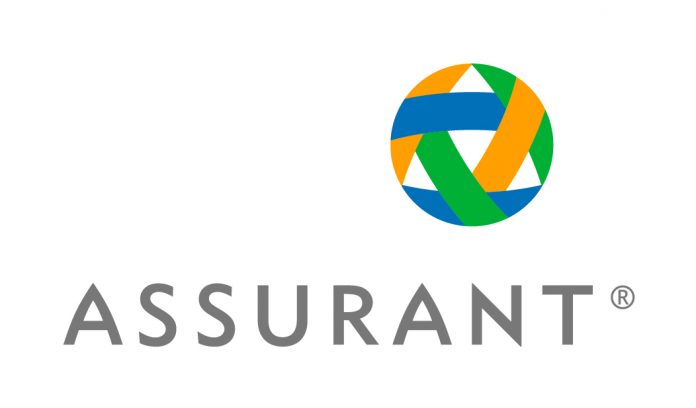Executive Interview: Norbert Monfort, VP of IT Transformation & Innovation, Assurant

Assurant Implements AI Platform Approach for Operational Efficiency and Improved Customer Experience
Norbert Monfort is VP of IT Transformation & Innovation at Assurant, Inc., a global provider of risk management solutions. A 24-year Assurant employee, he is also an adjunct professor at Florida International University. Norbert was recently interviewed by AI Trends Editor Jeff Orr.
Q: How did your AI journey begin at Assurant? Was this a response to a specific business challenge or part of your innovation role?

A: Assurant is evolving beyond our traditional insurance roots, and AI is key in helping us grow in non-insurance markets.
We’ve been thinking for a while about how best to leverage emerging AI technology for our business, and in early 2017, we implemented an initiative focused on three major technologies: machine learning, robotic process automation (RPA), and virtual agents.
We then broke it down further and asked ourselves, “Okay, how do these impact us?” Improving our customer experience and backend operational efficiency needed to be our main focus for business impact when it comes to machine learning.
Robotic process automation was strictly about backend execution improvement, while the virtual agent initiative was mostly going to be a front-end customer experience improvement. Virtual agents will help us improve our operations by offloading some of the tedious and repetitive work that goes to our agents today, allowing them to focus on improving the customer experience.
A third aspect we looked at was revenue generation. While beyond our initial focus, we have already envisioned use cases for machine learning that can be turned into new services for our clients or as a means of attracting new customers through insights we garner from our data.
Q: You are about one and a half years into implementation of these technologies. What is the operational status of these three AI pursuits?
A: For machine learning, we combined an outside platform DataRobot, Inc. and our own proprietary platform during a successful proof of concept (PoC) phase. Setting those initial machine learning platforms was foundational for Assurant, because it now allows us to focus on working through project backlog.
Our approach to RPA has been very similar. We brought in an outside platform which is now running live in production with a backlog to work through. For each project, we go through agile methodology, first working to get the platforms in place to be efficient. Without the platform approach, you’re going to struggle every time to figure out, “Okay, where I am going to put this?”
Led by our Digital team, we have several initiatives underway where the virtual agent is key. We are doing PoCs with a partner company. If that works out, it will become our platform. And our strategy remains the same to implement future backlog items that we’re building on that platform.
Q: Part of your approach has been to provide employees with education and awareness for these AI technologies and automation. Could you elaborate how you manage the human component of, “Is my job safe or am I working towards ultimately being replaced in the work that I do?”
A: The adoption of RPA has impacted some of the vendors we use, but it has had no impact on our employees. We have been very sensitive to that and have taken steps to ensure employees know the value they bring to the enterprise and understand our focus on AI is to improve their efficiency, not eliminate positions.
Similarly, machine learning has helped us improve services such as fraud detection, which is augmenting a rules-based engine that we already had in place. With the Machine Learning algorithms that we have developed, we can not only identify a much higher percentage of true fraud cases, but also identify low risk claims. There are multiple benefits to this. First, our fraud investigation unit can focus their efforts on true-fraud cases instead of chasing down valid claims. Secondly, we can auto-adjudicate certain low-risk claims to provide a better customer experience for our end consumers. It’s a win-win situation. So, it’s not about replacing human jobs, but improving the rules engines that we have in place today that help our customers.
The virtual agent allows us to offload a lot of the basic, repetitive calls that our human agents receive, and apply their skills to higher-level issues that our customers have.
Q: With the availability of cloud computing solutions, big data, and AI technologies, entirely digital organizations are now possible. Is there an advantage, or perhaps a disadvantage, to be a large enterprise compared to a couple hundred-person organization that is not encumbered by legacy systems, processes, and headcount?
A: Embracing new technology is always going to be easier when you have a greenfield because you’re starting from scratch. Assurant has always had innovation in its blood and I’ve worked for this company for 24 years. We have always been looking at what’s next – but always in the context of how it can help our customers and consumer – so, the culture is ripe for being able to take advantage of new technologies like AI.
Our approach to effective innovation focuses on capital investments and growth opportunities that build on our current technologies, acquisitions, growth investing and partnerships. Assurant Growth Investing (AGI) is the corporate venture capital initiative of Assurant. AGI invests in venture and growth stage technology companies that may be complementary or disruptive to Assurant’s core businesses.
Q: You mentioned that Assurant is looking at areas to invest in the future and utilizing a venture capital-like lens. Is there a similar type of interest or need to understand what’s happening in university research labs? Have the more recent technology waves changed their role?
A: Assurant has some experience working with universities and has done a small PoC with them. Our main learnings come from our AGI team via the InsureTech category.
University researchers often work on projects until they graduate and move on to create a startup that implements their university work. There is great research going on in those universities; however, I don’t know that they’re ever going to be enterprise ready. At least from a venture capital perspective, you want to watch those universities to see where the next generation of talent comes from and what ideas emerge because of the value derived from investing in a startup.
From an insurance company perspective, we probably want that startup to demonstrate some progress and then we would look towards funding and working with them after a prototype is viable.
I am charged with innovation for IT at Assurant, so we’re not limited to just AI. Blockchain and even drone technology are all interesting technology fields. But, the focus has been AI and that focus will continue for the next couple years. AI just seems to be the technology that has the most potential to really change our business over the next five to 10 years.
Q: You described how having a platform approach first allows you to go back and learn from the work that’s already in place, rather than examine each project in isolation and ask, “What are the possible technologies? How do we go about this? Do we need to make, buy, or partner?” Reusing the platforms allow you to scale and minimize time as well as the associated risk of reinvention. What are some best practices that you would pass along to other organizations?
A: One thing that I have learned is to try and utilize your existing organization. For example, we already had a data analytics team for years, but they weren’t using machine learning. So, we educated them on it and they took over as the machine learning leads. Now, they’re the ones that are the machine learning experts applying their skills to projects such as the virtual agent.
Assurant has been a digital organization for years. Take that digital team experience, focus them on learning how to implement AI technology, and move forward. Our digital team handles voice as well as the mobile and web frontend. Including this into your existing organizations makes it a lot easier as well, instead of trying to do a one-off project.
The other way to have aligned AI resources is to create a core AI team consisting of people from our various functional and business units, to provide different perspectives on how it will impact their areas of expertise.
Learn more at Assurant.
